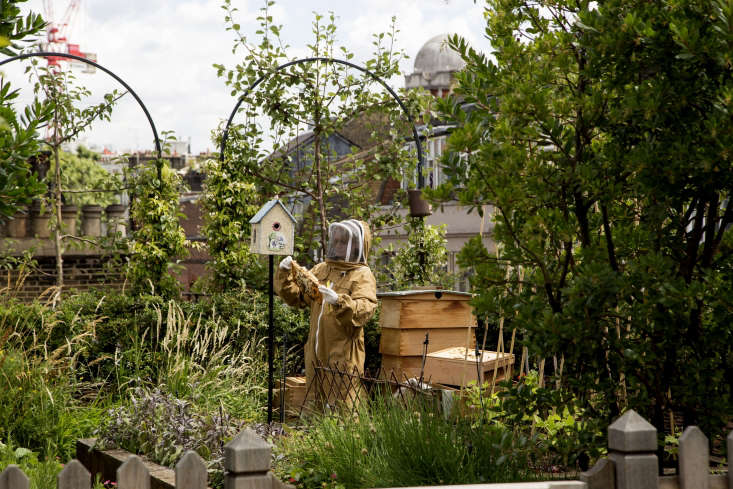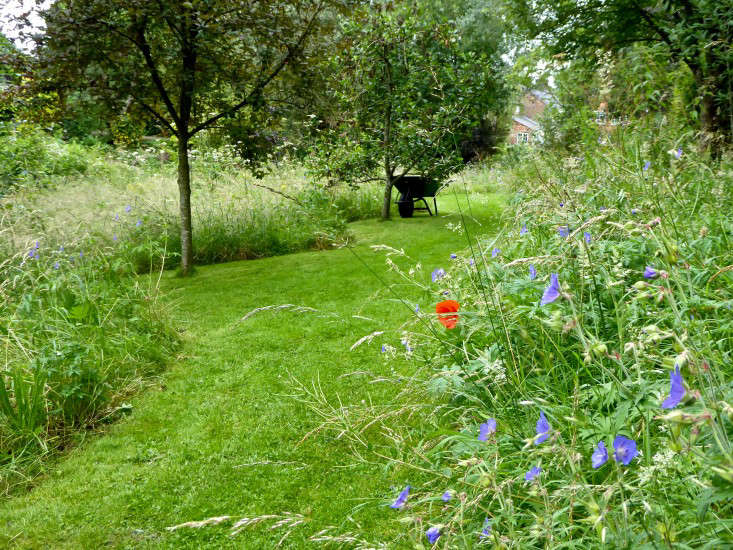Scale the height of any tall building in London and you start to realize how there are inviting green spaces spread out across the city’s skyline. At Kit Kemp’s Ham Yard Hotel the rooftop garden is more scenic than most, with herbaceous borders, reclaimed furniture and a productive potager that’s both beautiful and bountiful. We went up on the roof to take a closer look:
Photography courtesy of Ham Yard Hotel.

The outer boundary of the garden is planted with espalier fruit trees and woven between them is a lustrous Trachelospermum jasminoides, or Star Jasmine, hedge providing shelter from city noise and winds but also scenting the air of the whole terrace.

It also produces fresh vegetables for the hotel kitchens, but primarily the potager needs to look beautiful for hotel guests who can come up to the roof for a drink.




Strawberries (shown above) grow along the fronts of the beds with rows of vegetables including beetroot and sweetcorn behind and heirloom tomatoes are grown as cordons up strong pea sticks sunk into the beds. Summer crops are then interplanted in the gaps.
In the center of the beds there are two multi-stem Arbutus unedo trees (or Strawberry trees) which provide evergreen foliage year round but also shade out some of the sun-loving plants like chillis in the summer which, says Clive, is the one weak spot in the garden plan here.



N.B.: For more hidden gardens in central London, see:
- Secret London: The Bees of Buckingham Palace.
- A Secret Courtyard Garden in Piccadilly, Ancient Tree Ferns Included.
- A Secret Garden in the Middle of Regent’s Park in London.












Have a Question or Comment About This Post?
Join the conversation (0)